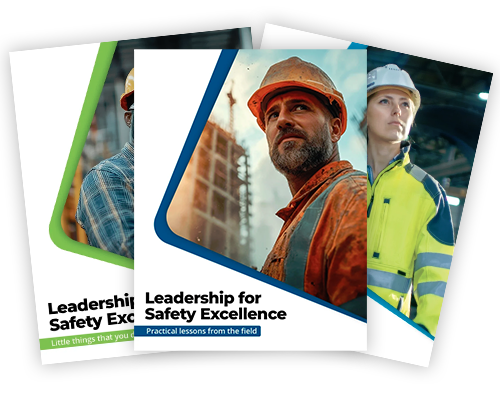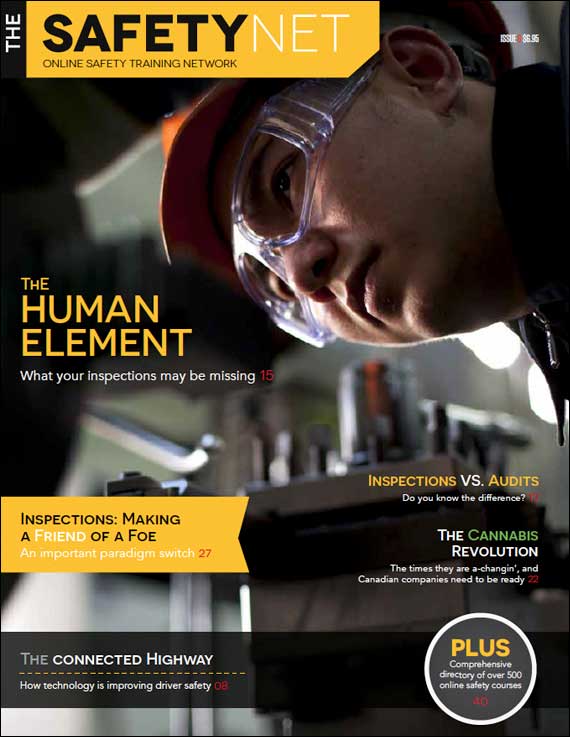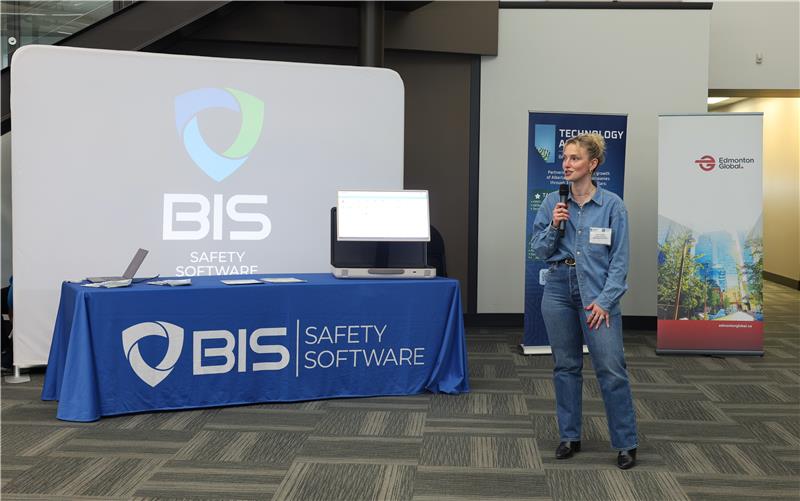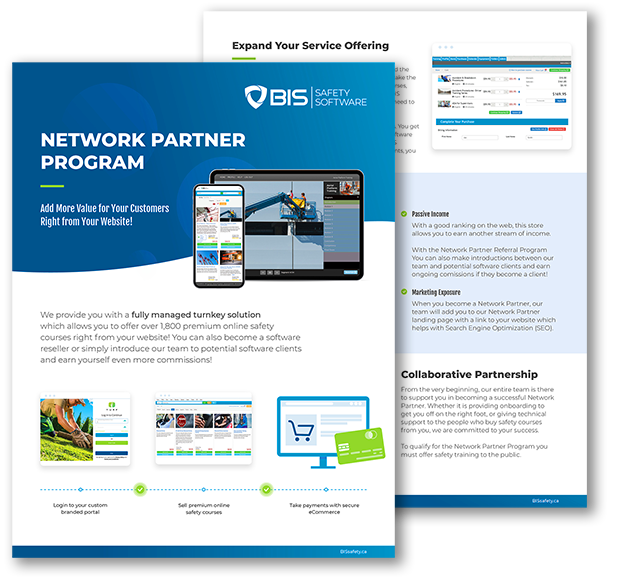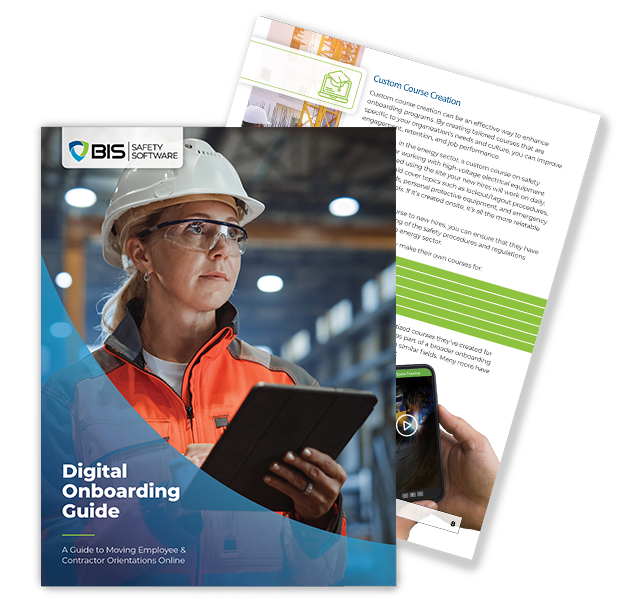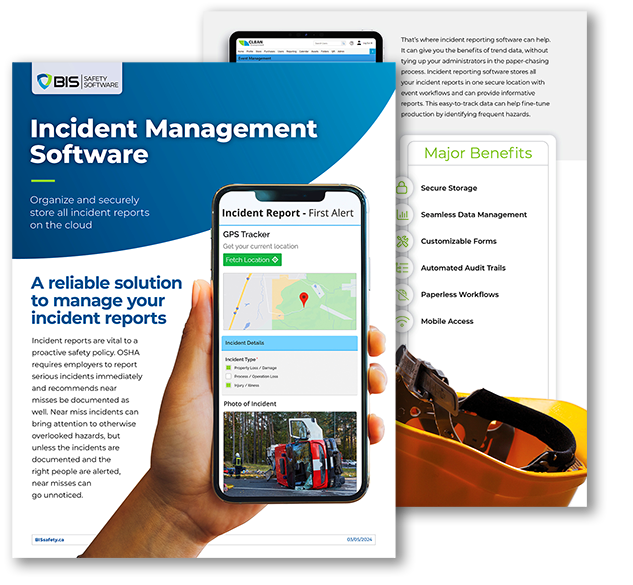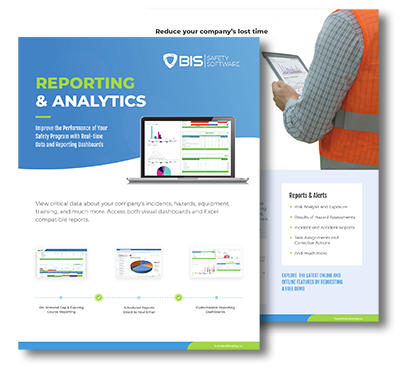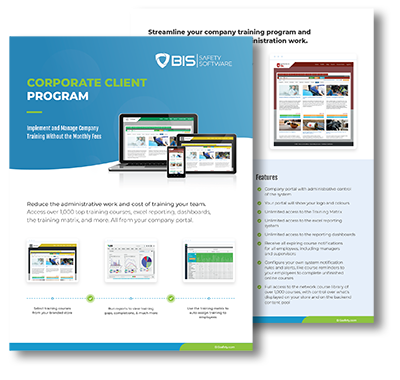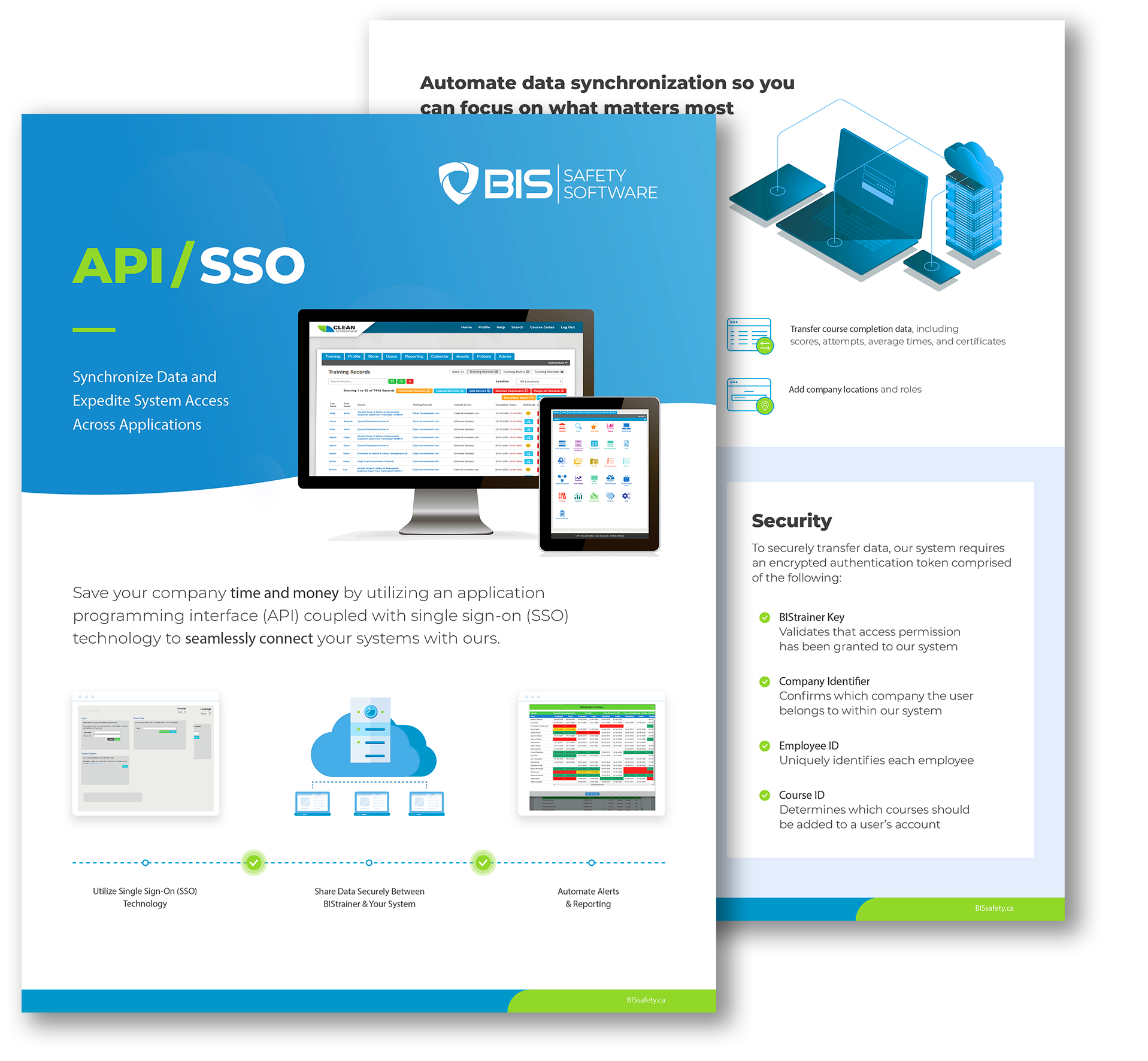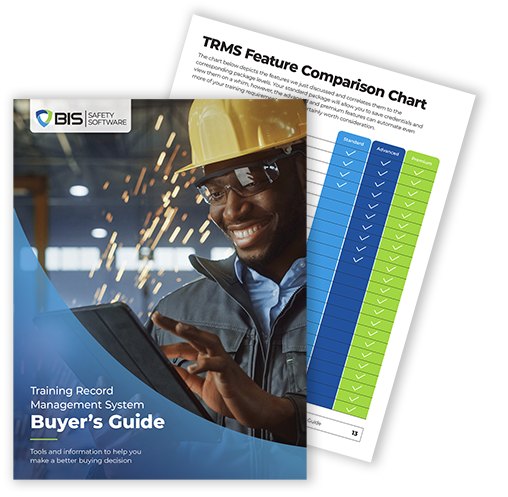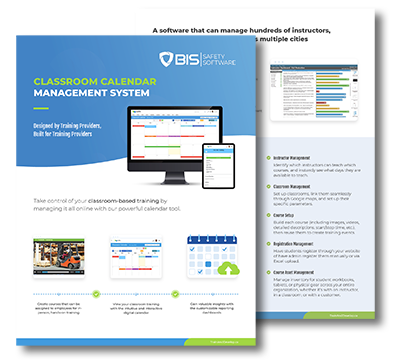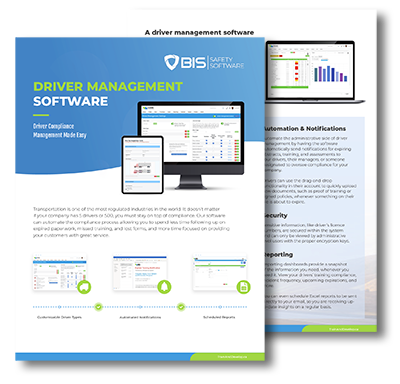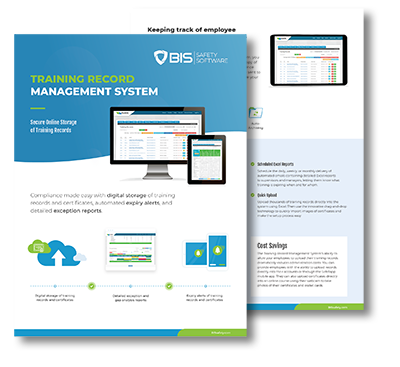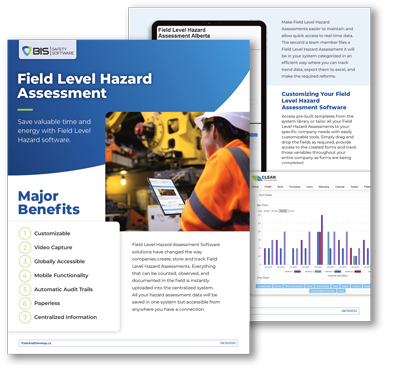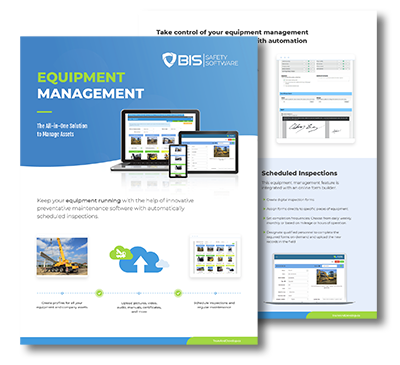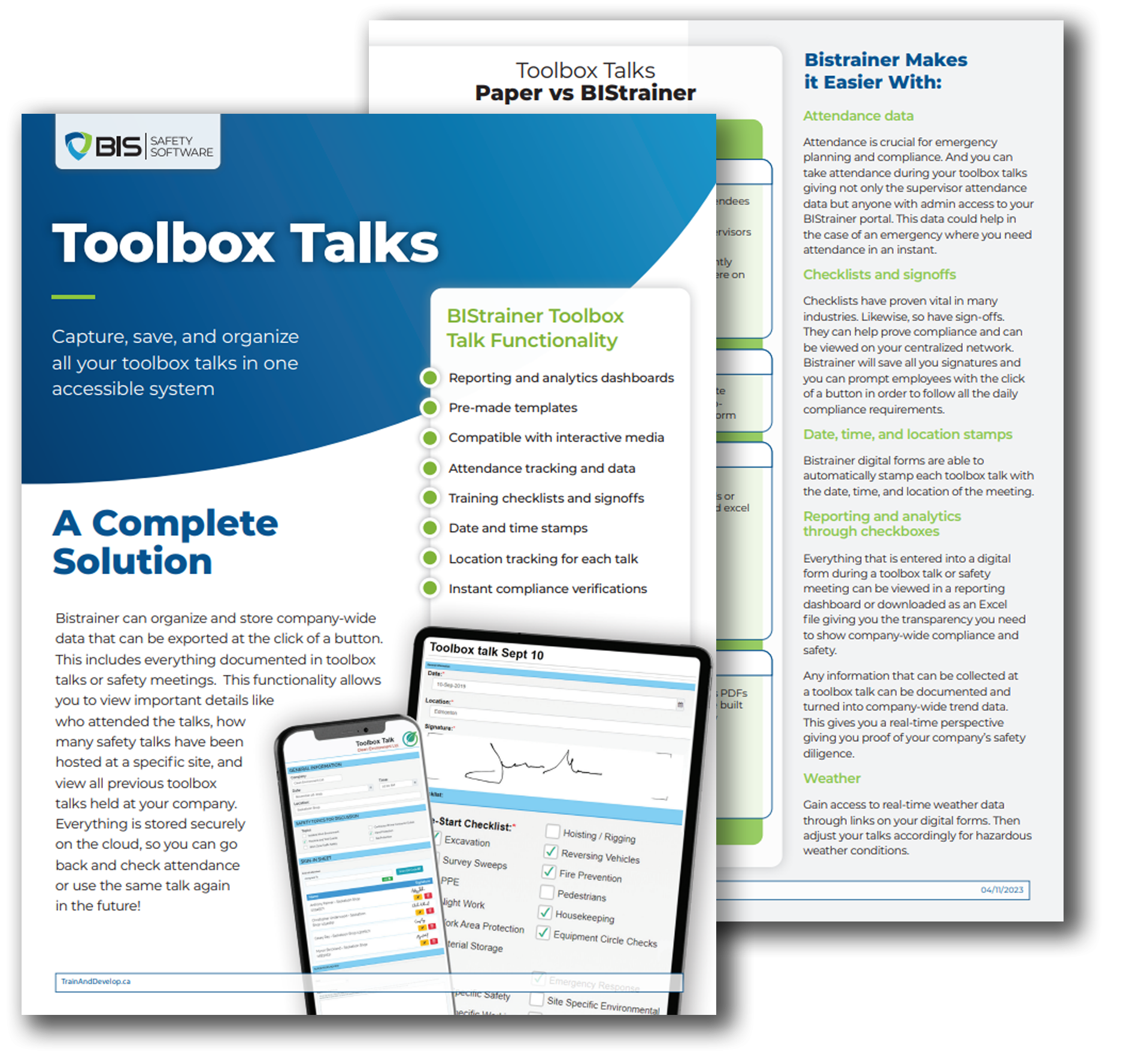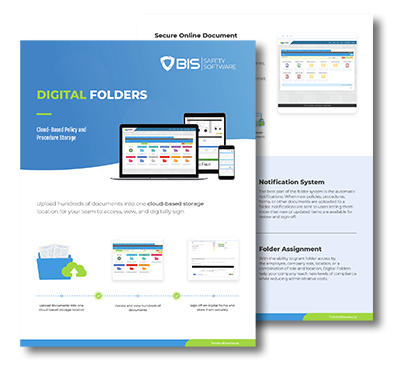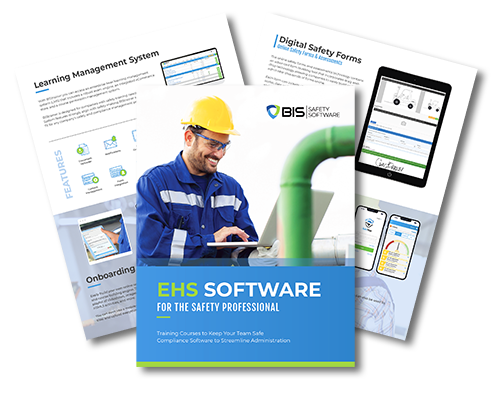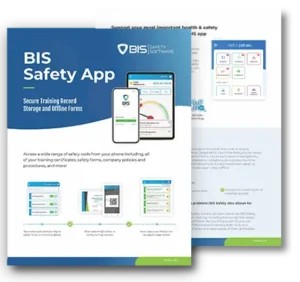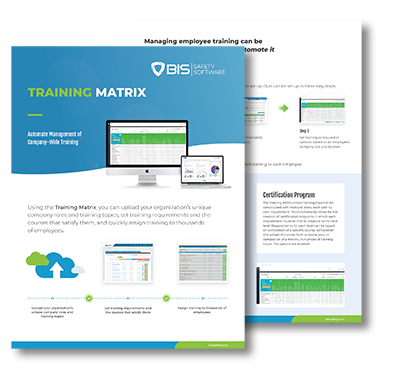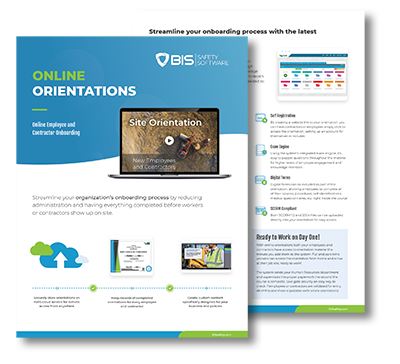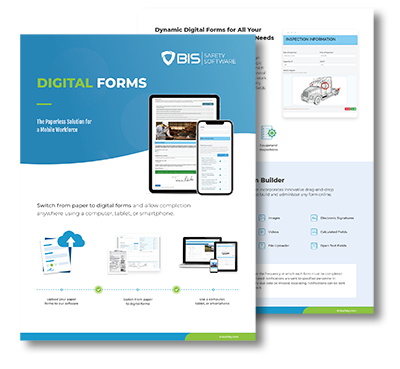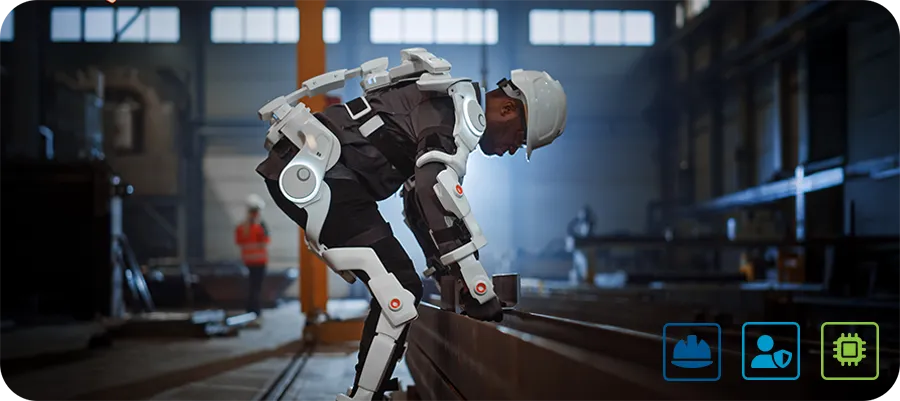
Workplace safety is evolving. Technology is changing the game. Wearable devices are at the forefront, combining tech and practicality. They protect workers, enhance efficiency, and reduce risks. From smart helmets to biometric sensors, these tools are transforming high-risk environments. Companies investing in them build safer, more productive futures, improving both employee welfare and operational success. With each advancement, these devices demonstrate their potential to reshape workplace safety for good.
A Brief History of Wearable Safety Devices
Wearable safety isn’t new. For decades, workers relied on helmets, gloves, and goggles to stay safe. Technology changed that. Early alarm systems, like vibration alerts in mining helmets, warned of dangers such as collapsing shafts or unstable terrain. These innovations paved the way for today’s advanced devices. With sensors, GPS, and real-time data, modern wearables are more than protective gear, they are integral tools for workplace safety. From alerting workers in hazardous zones to collecting data that informs long-term safety strategies, wearables have come a long way. The journey from basic alerts to predictive analytics highlights a growing commitment to reducing risks and safeguarding lives.
Types of Wearable Safety Devices
Modern wearables tackle specific hazards with precision and adaptability:
Smart Helmets
Equipped with AR (augmented reality), these helmets detect gas leaks and structural hazards. They provide instant alerts and facilitate communication on job sites. Some models integrate thermal imaging to detect hidden dangers, such as overheating machinery or fire risks. Enhanced sensors now enable predictive maintenance, flagging potential failures before they occur.
Biometric Sensors
These devices monitor vital signs like heart rate, hydration, and body temperature. Advanced models analyze stress levels and alert workers before fatigue sets in, preventing accidents caused by exhaustion. Sensors can now integrate with wearable patches that track hydration in real-time, offering on-the-spot health recommendations.
Location Trackers
GPS-powered trackers locate lone workers and ensure rapid response during emergencies. Geofencing features notify supervisors when workers enter restricted zones, reinforcing site protocols. New multi-network connectivity ensures these trackers remain operational even in remote locations.
Exoskeletons
Designed to support lifting tasks, exoskeletons reduce strain and prevent musculoskeletal injuries. They enhance physical endurance, allowing workers to perform repetitive tasks safely. Some models are now powered by AI, adapting to users’ movements for optimized support.
Smart Glasses
AR overlays provide hands-free access to instructions and safety checklists. These glasses improve precision and reduce downtime by streamlining workflows. Advanced glasses include voice control and facial recognition, enabling rapid identification of team members and secure data sharing.
Environmental Monitors
These devices detect airborne hazards, such as toxic gases or particulates, ensuring real-time protection in industries like mining and chemical manufacturing. Newer versions now combine weather sensors, giving additional insights into changing conditions that could pose risks.
Key Takeaways
- Wearables are shifting safety from reactive to proactive. Real-time data and predictive analytics let teams prevent accidents, not just respond to them.
- The best PPE is now smart. From AR helmets to biometric sensors, wearable tech is redefining what it means to be protected on the job.
- Tech-driven safety boosts more than just compliance. Companies that invest in wearables see gains in productivity, cost savings, and employee morale.
- The future of safety is connected, personalized, and always on. Smart wearables are evolving into essential tools for creating safer, smarter work environments.
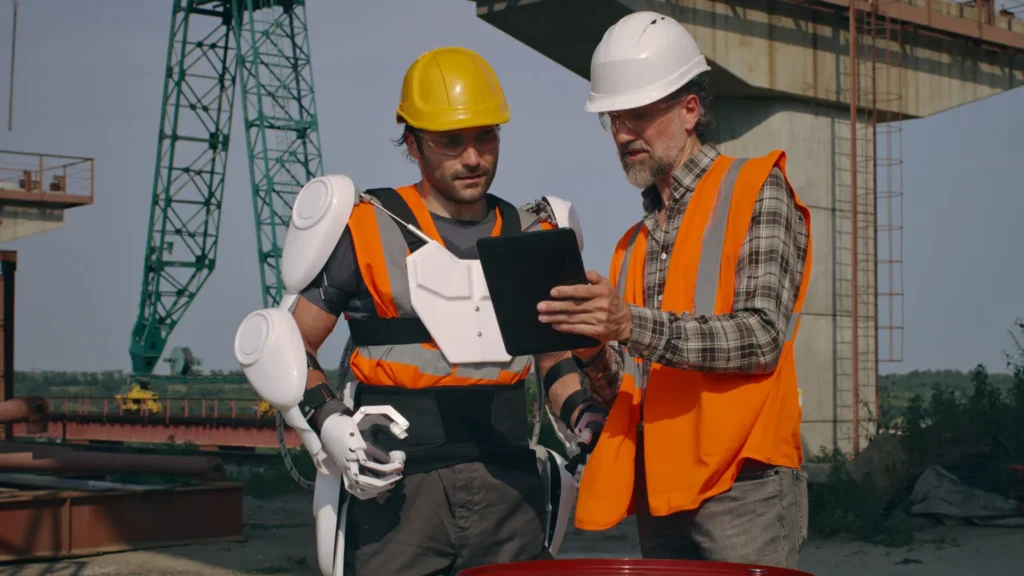
Industries Leading the Adoption of Wearable Technology
Industries with high risks are leading the way in wearable adoption. Their focus on safety and efficiency makes wearables indispensable tools:
Construction
Smart helmets and trackers improve site safety, aiding navigation through busy or hazardous areas. By providing real-time updates, they reduce the chance of accidents. Wearables also integrate with project management software, enhancing coordination and efficiency.
Oil and Gas
Biometric sensors and gas detectors protect workers from harmful exposures. Wearables also ensure compliance with safety standards in environments where stakes are high. Some systems now include drone connectivity, combining aerial surveillance with wearable monitoring.
Manufacturing
Exoskeletons reduce physical strain, while smart glasses streamline precision tasks. These technologies improve productivity while cutting down on workplace injuries. Collaborative robots (cobots) now pair with wearables for seamless workflows.
Healthcare
Wearables track stress and fatigue during long shifts, protecting healthcare professionals in high-pressure environments. Devices like wearable ECG monitors safeguard their health while improving patient care. Integration with telehealth platforms ensures that real-time data supports decision-making.
Mining
Monitors and trackers enhance safety in remote and hazardous locations. Advanced systems ensure miners can be located and rescued swiftly in emergencies. Combined with underground communication networks, these tools ensure 24/7 connectivity in challenging conditions.
Benefits of Wearable Safety Technology
1. Real-Time Monitoring
Continuous data collection allows for instant responses, preventing accidents before they occur. Live dashboards centralize this data, providing supervisors with actionable insights.
2. Enhanced Compliance
Automated tracking simplifies adherence to safety protocols, reducing manual errors. Regulatory updates can be pushed directly to wearables, ensuring workers remain informed.
3. Improved Productivity
Ergonomic support minimizes injuries and fatigue, boosting worker efficiency. Wearables also streamline workflows, allowing workers to focus on tasks without interruptions.
4. Cost Savings
Preventing incidents and reducing downtime saves businesses significant expenses. Predictive analytics further reduce costs by flagging issues before they escalate.
5. Data-Driven Insights
Wearables generate actionable data, enabling companies to optimize safety measures and predict risks. Advanced algorithms now analyze data trends to improve forecasting.
6. Employee Engagement
Workers feel safer and more valued when equipped with cutting-edge safety gear, fostering a positive workplace culture. Gamified safety metrics on wearables further encourage compliance and proactive behavior.
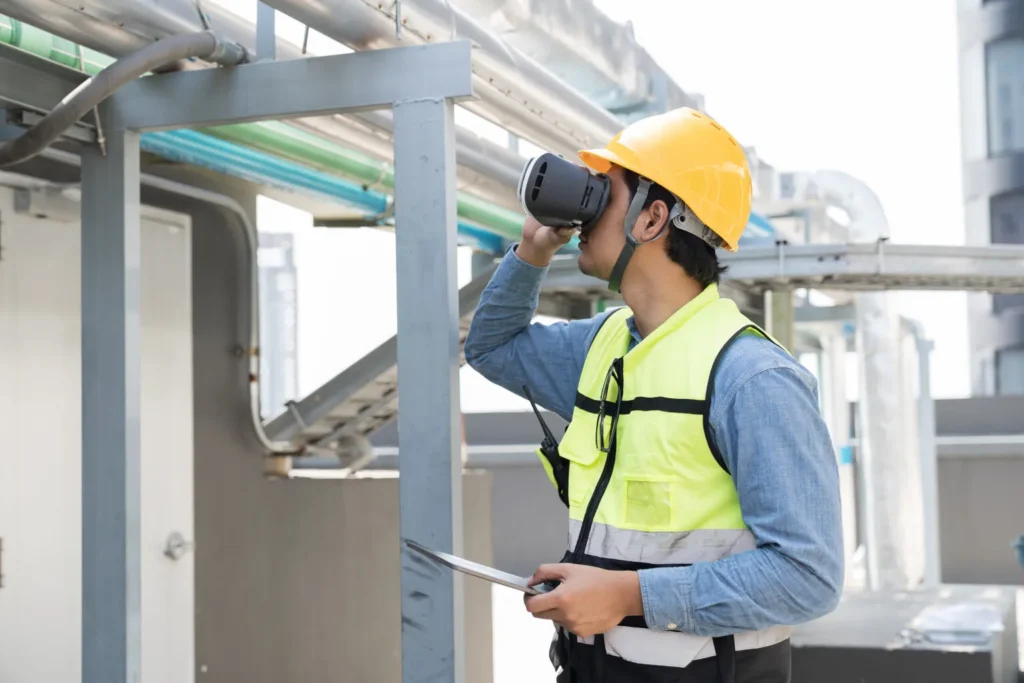
Challenges and Considerations
Privacy and security remain key concerns. Companies must safeguard data with encryption, restricted access, and regular audits. Transparent policies help build employee trust, ensuring they understand how their data is used. Training is also essential to ensure smooth integration. Wearables must balance functionality with comfort, ensuring employees adopt them willingly. Companies must also address device interoperability to integrate wearables seamlessly with existing systems.
The Future of Wearable Safety Devices
Wearables will only get better. Advances in AI, IoT, and materials science promise even greater capabilities. Predictive analytics will identify risks before they materialize. Lightweight, durable designs will enhance comfort, ensuring long-term usability. Integration with centralized systems will create real-time safety dashboards, providing supervisors with a comprehensive view of operations. Future innovations may include self-adjusting wearables that adapt to individual needs, from temperature regulation to task-specific support. These technologies will redefine workplace safety.
Wearables may also integrate more seamlessly with smart environments. Imagine construction sites where devices communicate directly with equipment to shut down machinery during emergencies. Such systems would amplify the effectiveness of safety protocols, reducing human error and saving lives. Additionally, future wearables may include augmented biofeedback, allowing workers to adjust their behavior in real time based on physiological data.
Final Thoughts
Wearable safety devices are more than gadgets, they are transformative tools. By investing in them, companies create safer, more innovative workplaces. These tools not only protect lives but also drive efficiency, reduce costs, and improve morale. As technology evolves, wearables will become indispensable in industries worldwide. The future of workplace safety is here, and it’s being built one wearable at a time.
Related Articles
- All Posts
- #EmergencyPreparedness
- 2025 safety trends
- 360 Immersive
- 360immersive
- 6S Safety
- accident prevention
- accidental careers
- accountability
- adjustable workstations
- adult education
- AI automation
- AI implementation
- AI in business
- AI in operations
- AI in Safety
- AI podcast
- AI strategy
- AI transformation
- Alberta safety courses
- Allan James Moore
- artificial intelligence
- asking for help
- audit findings
- audit readiness
- Audit Reporting
- automation in safety
- automation strategy
- avoidable injuries
- awareness
- Aztec Safety
- back strain
- BambooHR integration
- Bear safety
- behavior-based safety
- Behavioral Safety
- behavioural safety
- biometric sensors
- BIS Podcast
- BIS Safety Podcasts
- BIS Safety Software
- BIS Safety Spotlight
- black holes
- Blame Culture
- Blue Angels
- BP Texas City Explosion
- Brave Leadership
- Brett Burkard
- burnout
- business automation
- call before you dig
- Canadian OHS
- Canadian safety
- Canadian safety history
- Canadian safety standards
- Canadian wilderness safety
- carbon monoxide
- Carolynne Heron
- CCOHS
- chemical
- chemical vapors
- chronic injuries
- chronic pain
- cloud-based safety tools
- Coming Soon
- community safety programs
- Competency in Safety
- complacency in safety
- Compliance
- compliance courses
- Compliance In Canada
- compliance issues
- Compliance management
- Compliance Reporting
- compliance software
- compliance tools
- compliance tracking
- compliance training
- compliance vs protection
- Construction advocacy
- Construction education
- Construction industry
- construction safety
- construction safety training
- construction technology
- continuous improvement
- continuous safety improvement
- corporate culture
- corporate training
- corrective actions
- crane
- CSA standards
- Customer Spotlight
- Customer Spotlight Kevin Swinden Global Hazmat Safety Culture Hazmat Management Dangerous Goods Competency in Safety Workplace Risk Mitigation BIS Training Clients Canadian EHS
- customized training
- daily trip inspection
- Damage Prevention
- Dangerous Goods
- dangerous goods classification
- Danny Sellers
- data-driven safety
- debriefing
- Decision Analysis
- defect management
- defect tracking
- defensive driving
- DEI in onboarding
- digital badges
- digital compliance
- digital FLHA
- digital forms
- Digital Hazard Reporting
- Digital Onboarding
- digital safety
- Digital Safety Audits
- digital safety meetings
- Digital safety systems
- digital safety tools
- digital safety transformation
- digital site access
- Digital Training Tools
- digital transformation
- DMS features
- document control
- document management system
- Dr. Joanna Pagonis
- Dr. Tom Krause
- driver file management
- driver training
- driving instructor program
- DTRMS
- e-learning
- e-learning tools
- eadership in safety
- early intervention
- education technology
- EHS
- EHS Adoption
- EHS Compliance
- EHS digital solutions
- EHS Inspections
- EHS Onboarding
- EHS software
- EHS systems
- EHS technology
- EHS tools
- Einstein
- electrical safety
- elite performance
- Emergency Action Plan
- emergency preparedness
- emergency procedures
- emergency response
- emergency supplies
- emotional training
- employee behavior
- employee engagement
- employee health
- Employee onboarding
- Employee Readiness
- employee safety
- employee training
- employee trust
- Energy Isolation
- engaging toolbox meetings
- equipment inspections
- ergonomic consulting
- ergonomic design
- ergonomic risks
- ergonomics
- Evacuation Procedures
- evidence collection
- EWI Works
- excavator safety essentials
- exoskeleton
- exoskeletons
- failure analysis
- fall prevention
- fall protection
- fast onboarding
- field experience
- field level hazard assessments
- field operations
- field safety
- field safety assessments
- field safety communication
- field safety leadership
- field safety services
- Field Safety Technology
- field safety tools
- Field-Friendly Software
- Fire Drills
- fire prevention
- Fire Safety Training
- first aid kit
- first week on the job
- first workplace injury
- fleet management
- fleet safety
- FLHA engagement
- FLHA Integration
- FLHA software
- FMEA
- freight
- Frontline Engagement
- frontline safety
- fuel handling
- future of work
- Gas Safety
- Global Hazmat
- global onboarding
- gravitational waves
- gut feeling in safety
- hand injuries
- handling hazardous materials
- hands-on training
- hazard analysis
- hazard assessment compliance
- hazard assessment software
- Hazard Awareness
- hazard communication
- Hazard Identification
- hazard prevention
- hazard recognition
- hazard reporting
- hazard reporting technology
- hazard tracking
- Hazardous Energy Control
- Hazmat Management
- Health & Safety Podcast
- health and safety
- hearing loss prevention
- hearing protection
- heavy equipment operation
- heavy equipment safety
- hidden workplace hazards
- high voltage systems
- HR automation
- HR software
- HR technology
- human factors
- human factors in safety
- human in the loop
- Human Performance
- human vs machine
- human-centered design
- human-centered safety
- humor in safety
- ICBC certification
- identification
- immersive learning
- Imposter Syndrome
- incident data
- incident investigation
- incident management
- incident prevention
- incident reporting
- inclusive leadership
- industrial AI
- Industrial Hygiene
- industrial safety
- influence vs control
- Infrastructure Risk
- injury consequences
- injury prevention
- injury prevention tips
- injury recovery
- injury reporting
- injury response
- injury response plan
- instant hazard logging
- instructor development
- internal audits
- international workforce
- interpreting safety data
- invisible dangers
- ISO standards
- Jeff Mulligan
- Jennifer Lastra
- job site accountability
- job site hazards
- job site risks
- job site safety
- jobsite readiness
- Jody Young
- KBR Safety Training
- Kevin Swinden
- labor movement
- ladder safety
- Leadership
- leadership accountability
- leadership and empathy
- Leadership in Safety
- Leadership Management
- leadership messaging
- Lean Manufacturing
- Lean Workplace
- learning from incidents
- learning management
- lifting techniques
- LIGO
- Linda Miller
- LMS
- LMS features
- LMS software
- Lock Out Tag Out
- lockout tagout
- lone workers
- LOTO
- machine learning
- Machine Safety
- Maintenance Safety
- mental health at work
- MI Safety
- microlearning
- Mike Schwartz
- minor injuries
- mobile FLHA solution
- mobile onboarding
- Mobile Safety Apps
- Mobile Safety Platforms
- mobile safety reporting
- Mobile Safety Tools
- mobile safety tools safety compliance solutions
- mould hazards
- mould prevention
- movement in workplace
- multilingual training
- MyZone AI
- Near Miss Reporting
- new hire experience
- New Hire Safety
- New Worker Training
- new workers
- no-blame investigations
- noise exposure
- nonconformance
- Northern BC
- NRCA
- NSC Standard 13
- occupational fatigue
- occupational hazards
- occupational health
- occupational health risks
- occupational safety
- occupational therapy
- OH&S
- OHS
- OHSA
- oil and gas safety
- omni-training
- onboarding Canada
- onboarding safety
- Onboarding Software
- online learning
- online orientation software
- Online safety training
- operational efficiency
- Operational Excellence
- organizational culture
- organizational safety
- OSHA compliance
- OSHA standards
- outdated practices
- Outdoor work hazards
- overconfidence
- overhead crane courses
- pain awareness
- paperless safety reporting
- paperless safety talks
- personal protective equipment
- Pharmaceutical Safety
- physics careers
- pipeline safety
- playbook software
- podcast
- post-accident review
- post-incident protocol
- PPE
- PPE enforcement
- PPE improvement
- pre-trip inspection
- predictive analytics
- pretrip inspection
- preventing shortcuts
- preventive action
- proactive risk management
- proactive safety
- proactive safety culture
- proactive safety measures.
- Proactive Safety Systems
- process improvement
- Professional development
- propane safety
- propane storage
- protective clothing
- psychological hazards
- psychological safety
- quality control
- quality management
- quality standard
- Real Safety Leadership
- real-time hazard reporting
- Real-Time Reporting
- real-time safety
- real-time safety tools
- real-time site data
- recordkeeping
- reduce training costs
- regulatory updates
- repetition in safety
- repetitive motion injuries
- respirator safety
- respirators
- risk assessment
- risk management
- risk mitigation
- risk prevention
- Risk Prevention Tools
- risk reduction
- road safety
- Robin Postnikoff
- ROI with AI
- root cause analysis
- root cause correction
- routine task risks
- safe excavation
- safe habits
- safe transport
- safe work habits
- safe work practices
- safety
- safety accountability
- safety advice
- safety article
- Safety Audit Software
- safety automation
- safety awareness
- safety best practices
- safety communication
- safety compliance
- Safety Conversations
- safety culture
- safety data
- safety data sheets
- safety documentation
- safety engagement
- safety follow-up
- safety gear
- safety gloves
- safety goggles
- safety habits
- safety improvement
- safety incentives
- safety innovation
- safety insights
- safety inspection
- safety instinct
- Safety Leaders
- safety leadership
- Safety Leadership Podcast
- safety legislation
- safety lessons
- safety management
- safety management system
- safety management systems
- safety metrics
- safety mindset
- safety motivation.
- safety myths
- safety onboarding
- safety planning
- safety podcast
- safety procedure updates
- Safety Procedures
- safety process improvement
- safety professionals
- safety reporting
- safety review process
- safety shortcuts
- safety software
- Safety Spotlight
- safety systems
- safety technology
- safety theater
- safety tips
- safety tools
- safety training
- safety transformation
- safety transparency
- Sarah Anderson
- scaffold safety
- scaffolding inspections
- scalable training solutions
- Scott Lyall
- shipping documentation
- silent dangers
- silica dust
- Sinogap Solutions
- slow-building hazards
- smart helmets
- smart PPE
- smart safety systems
- smart safety tools
- SOPs
- space science
- Spencer McDonald
- Standardized Work
- stop work authority
- storytelling and safety
- storytelling in safety
- supervisor training
- system safety
- Systems Thinking in Safety
- tablet-based toolbox talks
- TDG
- team communication
- team performance
- teamwork
- tech and ergonomics
- tech in safety
- tech-enabled learning
- Thinking Driver
- Titan Environmental
- toolbox talks tablets
- Total Recordable Injury Formula
- tough guy mentality
- toxic air
- training
- training courses
- Training integration
- training management
- training matrix
- training record management
- training records
- training software
- transportation
- transportation of dangerous goods
- trust
- Trust and Accountability
- trust at work
- underground utilities
- unseen workplace threats
- user experience
- utility line marking
- utility locating
- Utility Safety Partners
- values-based onboarding
- vehicle safety
- version control
- veteran advice
- Virtual Reality
- VR safety training
- VR Technology
- wearable technology
- WHMIS
- Wildlife awareness
- witness statements
- women in leadership
- work-alone training
- work-related injuries
- worker accountability
- worker advocacy
- worker fatigue
- worker protection
- worker safety
- worker safety habits
- worker safety tips
- worker trust
- worker wellbeing
- workers' rights
- Workforce Automation
- workforce compliance
- Workforce development
- workforce engagement
- workforce management
- Workforce Readiness
- workforce training
- workplace accidents
- workplace air quality
- workplace best practices
- workplace certification
- workplace compliance
- Workplace Culture
- workplace hazard prevention
- Workplace Hazard Tracking
- workplace hazards
- workplace health
- workplace incident response
- workplace injuries
- workplace injury prevention
- workplace inspections
- workplace leadership
- workplace mindset
- Workplace Organization
- workplace risk factors
- workplace risk management
- Workplace Risk Mitigation
- Workplace safety
- workplace safety culture
- Workplace Safety Leadership
- workplace safety rules
- workplace safety tech
- workplace safety tips
- Workplace Safety Tools
- workplace safety training
- workplace stress
- workplace tiredness
- workplace wellness
- WSPS
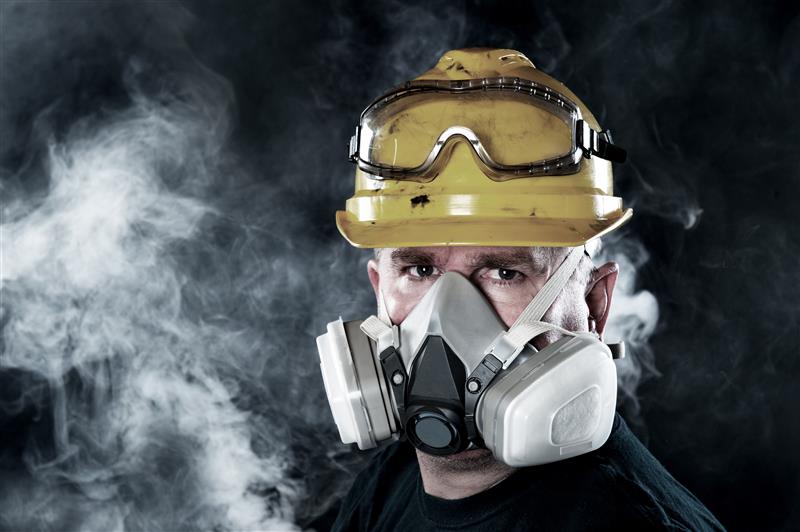
Invisible and unpredictable, gases can pose serious risks in any work environment. Learn why understanding gas behaviour is critical for...
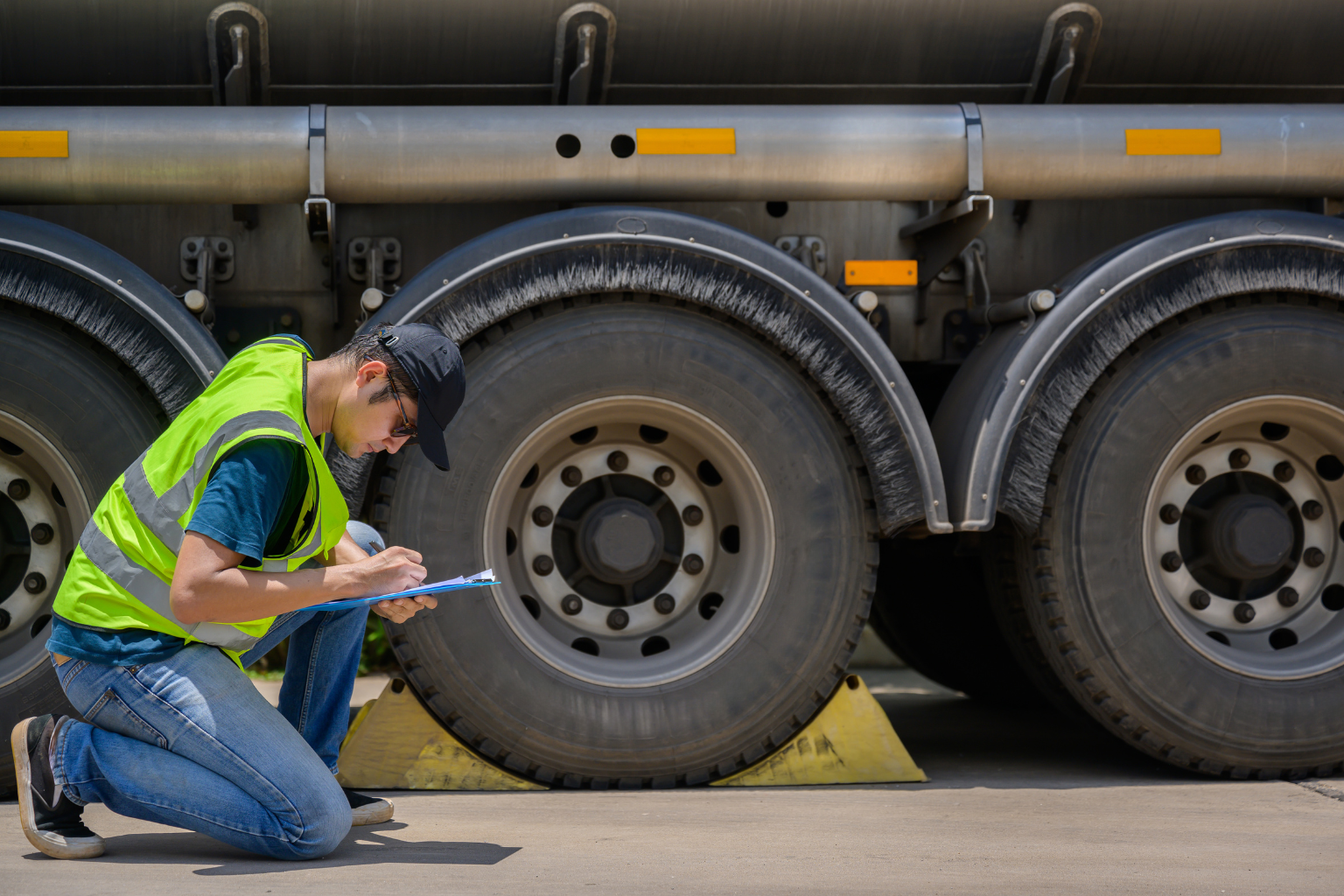
Learn how daily pre-trip inspections boost fleet safety in Canada, ensuring compliance, preventing accidents, and reducing costly downtime.

Lisa Rantucci started her career in safety with a single question: ‘Can I join your team? In her early twenties,...



